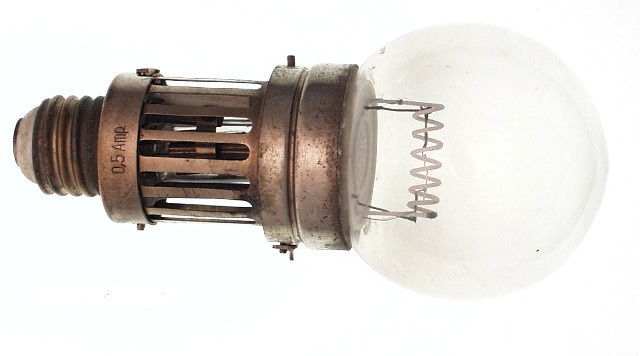Jun 18 2013
Nernst lamps are thermal light sources that emit radiation near the infra red region of the electromagnetic spectrum. Nernst lamps are thermal radiators, meaning a solid which is heated to very high temperatures to produce light radiation. Nernst lamps were invented by the German physicist and chemist, Walther Nernst in the year 1897.
Nernst lamps consist of a glowing piece made up of oxide mixtures; this piece is heated by an electric current. Nernst lamps are continuous radiation sources that produce wavelengths near the infrared region of the spectrum. A major disadvantage of this lamp was the need for pre-heating, which made its usage obsolete over a period of time. This article will elaborate on the working, construction and applications of Nernst lamps.

An original Nernst lamp. Image Credits: Wikimedia Commons
Working and Spectral Output
Nernst lamps are black body radiation source that use a refractory material (ceramics) as the glowing element. This element is heated to very high temperatures (higher than that of globar) by an electric heating source. At such high temperatures the glow element emits radiation in the infra red range of the electromagnetic spectrum.
The emitted radiation from Nernst lamps lies in the in the near infrared range, 400 nm to 20 µm. They are good sources of IR radiation, but not very effective in producing mid IR wavelengths.
Construction
The glowing element of Nernst lamps is made of mixture of oxides of rare earth metals such as zirconium and yttrium. The Nernst lamp does not require a glass envelope as it can operate even when exposed to air.
Applications
Some of the applications of Nernst lamps are given below:
- Infrared spectroscopy
- FTIR (Fourier Transform Infrared Spectrometer)
- Ordinary lighting elements
Sources and Further Reading